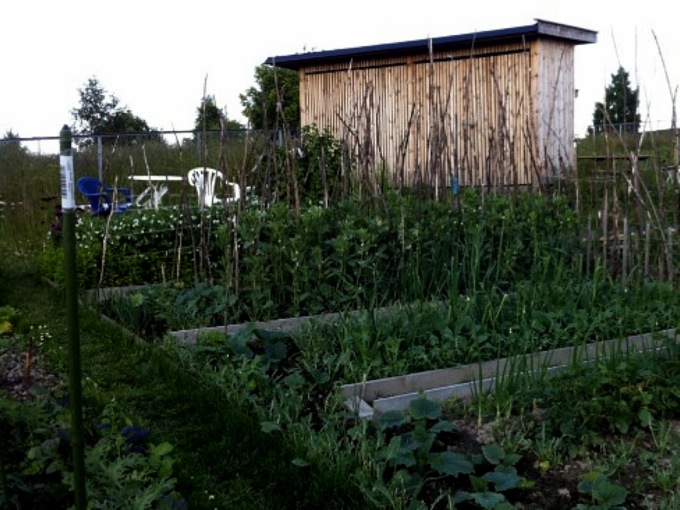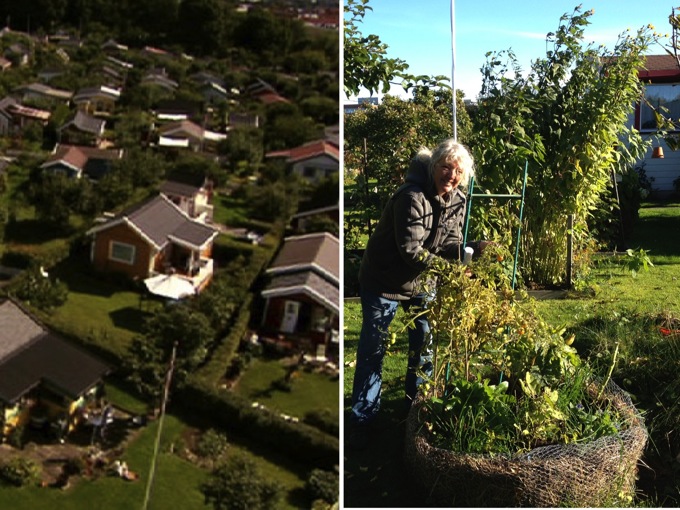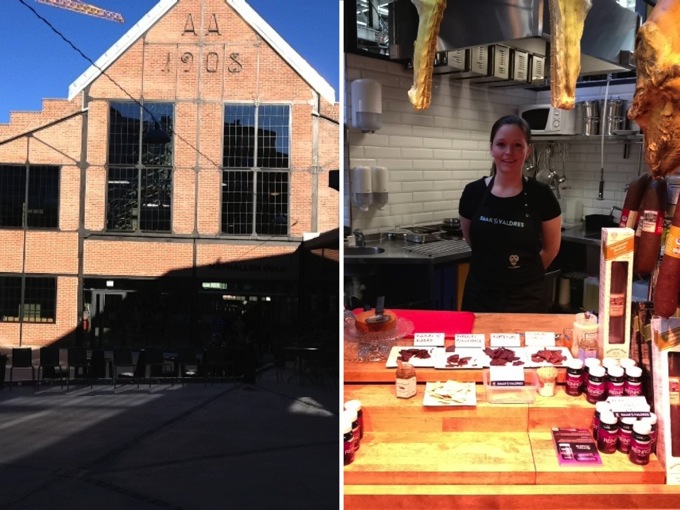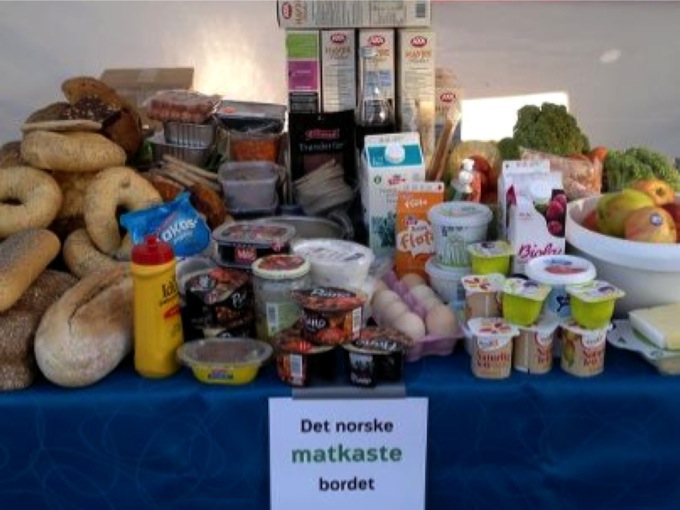Oslo / food and sustainability
Growing
Oslo is far ahead when it comes to urban, organic agriculture, and a lot is happening in this area.
The Agency for Urban Environment (BYM) is running Bogstad visit farm, which has been organic for years. Bogstad welcomes schools and kindergartens. Every year 4000-5000 children learn about agriculture, meet animals and harvest potatoes which they get to take home. Demonstration fields for grains and herbs are used both by the public for self-study and educational programs for schools. The farm also produces organic cereals, meat of lamb / sheep and cattle. Grazing animals from Bogstad tend the landscape within City of Oslo’s management areas in the forest and on the islands. In cooperation with the County Governor of Oslo and Akershus’ agriculture department, BYM is about to develop Bogstad visit farm into an arena for professional development and networking, for agriculture in general and urban organic farming in particular, and as a bridge between conventional and organic farming, and between city and country.
There is ongoing work with a zoning plan for Sørli visit farm in Østmarka. Sørli is planned as a full farm with organic animal husbandry and cultivation fields. Operations and animal husbandry shall happen in joint operations with Bogstad visit farm. Oslo Education Agency is running Geitmyra school garden, which is a professional and educational Center for school garden activities in Oslo. Geitmyra can become a center for development of future school gardens. A large number of schools in Oslo have school gardens, but of slightly different standard. Some former school gardens are turned into allotments.
Oslo has a tradition for school gardens. An important goal of school gardens is that students experience the joys of nature. There is a focus on developing students’ ability to feel responsibility, respect and understanding of animal and plant life, and to engage in conservation and environmental issues. School gardens may be a learning arena in dealing with different subjects, such as science, and Activity School (SFO). In addition to that, students can learn to work with soil and grow food, it is natural to focus on current topics such as organic food, locally produced food, environment and climate, as well as culture and diversity. These are themes in several curricula such as math, language and science. School gardens can help with practical examples.School gardens can be a gathering place and inspiration for learning and fun for students.
Nordre Lindeberg farm is also a visiting farm, run by the District of Alna. The farm has a diversified livestock and crop production, adapted for different age groups and users.
Two other farms in Oslo include The Royal Kings Farm (Norwegian Folk Museum) and Abildsø farm in the District of Østensjø. The Royal Kings Farm has been operating organic milk production, and is in the process of planning a visit farm. Norwegian Folk Museum has the “Trønder Courtyard” inside the museum area, which is visited by schools and kindergartens. Here, there is a small crop field. Abildsø farm runs “The SchoolFarm”; the farm has an agreement with schools in the district area about offering students at the middle and secondary level an alternative school day.
In Sørkedalen there is traditional farming of grains and many horse stables. Agriculture in Maridalen consists mainly of grain production. There are strong restrictions on operations in the basin of Maridalsvannet.
The Agency for Urban Environment has, as part of the Cities of the future project, established a partnership with the MAJOBO project (Food and land where you live). In connection to this the Ministry of Environment has granted funding. MAJOBO is a grassroots movement for the establishment of local and organic consumption and growing of food. The MAJOBO project is initiated by the network Gaia Agenda. The Agency for Urban Environment participates in MAJOBOs steering committee, and has made land available. MAJOBO has contributed to the creation of “The Glory”; new allotment gardens in Bjørvika.
Cities of the Future have previously been in dialogue with the District of Sagene to establish a knowledge center for organic food growing on roof areas on Sagene community building.
Oslo has about 1000 allotment gardens where food and flowers are grown by private individuals.
There are also about 1000 gardens in garden colonies which are mainly private ornamental gardens with small cabins, but some food is also grown here (berries, fruit trees and vegetables).
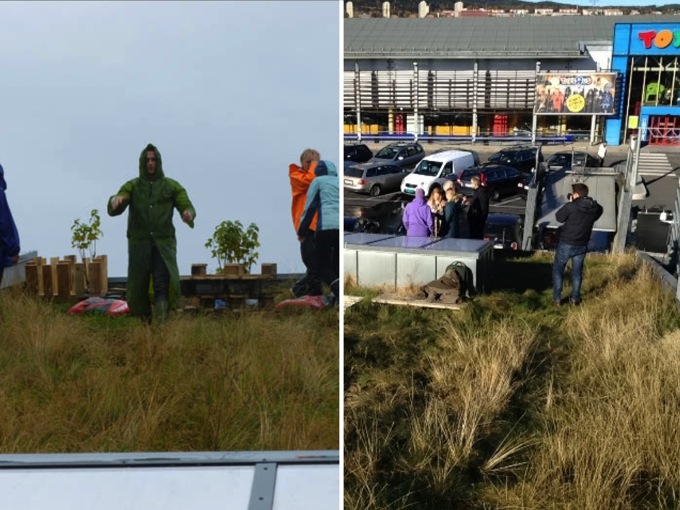
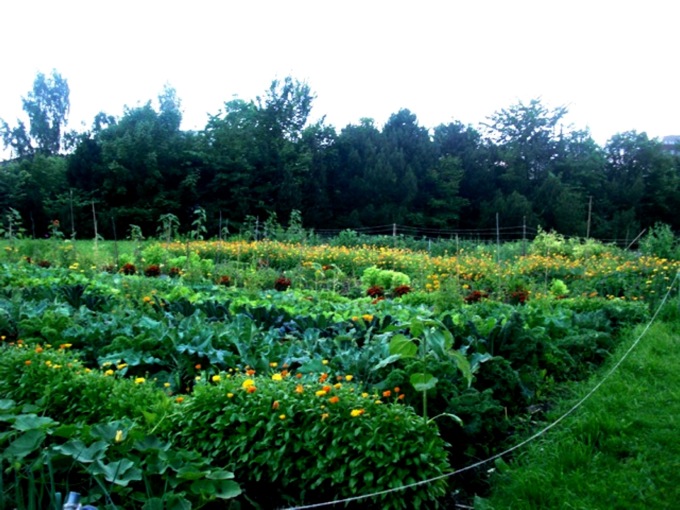
Delivering
Most Norwegians buy their food from supermarkets and the market is dominated by 4 supermarket chains. The biggest supermarket owner is “Norgesgruppen” with an almost 40% market share. The supplier market is also dominated by a few companies/cooperatives: Tine for dairy, Nortura for meats and Bama for fruits and vegetables.
There is a slowly growing focus on healthy, local and organic food in the supermarket industry: for example the dairy company Tine now labels all milk sold in Oslo as “milk from Østlandet”, i.e. locally produced milk. Kiwi, one of the supermarket chains, recently launched a new campaign to cut VAT/taxes on organic food items and has already run a similar campaign for fruits and vegetables for several years. In Oslo, two of the biggest supermarket chains promised to cut prices and offer organic food at the same price as conventional food. Spring 2013, The Norwegian Agricultural Quality System and Food Branding Foundation is launching a major campaign on organic food. “The Green Keyhole” is a well-established Nordic labelling system for health(ier) food products. The Norwegian government is particularly supporting organic and small niche food manufacturers.
Oslo has several box-scheme companies offering food delivered to your door. Some are all organic, some focus on dinner items etc. These box schemes seem to fit well with the increasing demand for healthy yet convenient food, however the price level indicates that high income families will be the main customer group. So far, Oslo does not have any Community Supported Agriculture (CSA). However, there has been several initiatives to start up CSA farms, and interest groups are still working to make it happen.
In some parts of the city you will find “immigrant shops”; small independent grocery shops run by immigrants with a vast selection of fruits, vegetables and exotic food items. These are quite popular and offer fruits and vegetables at a low cost. There are also high-end food shops which offer high quality food items, preferable different labels than in the supermarket chains, and with an emphasis on organic food and local specialities.
Oslo has a Farmers Market which takes place on a regular basis in fixed marketplaces. In spring there is a market about every other weekend, from mid-August until Christmas there is a market every weekend. Every year in September/October, a huge farmers’ market-like food festival take place in Oslo on the city hall plaza with more than 100 stalls. The festival attracts local food specialities, suppliers from all over the country and is immensely popular among people in Oslo. The products there are mainly processed foods like jams, oils, cured meat, cheese etc.
Enjoying
In general, you can say that there are two parallel trends relating to food in Norway. Food is becoming cheaper and more industrialized. People are demanding more processed foods and the market is developing quickly. Now consumers can get fresh ready-chopped onions and frozen ready-made mashed potatoes in the supermarket.
On the other side, a share of the urban population with high education and high income are becoming more aware, and is demanding healthier, environmentally friendly and local specialty foods. It is trendy to be interested in food and many people take on cooking as a hobby.
Oslo leads the way in offering different foreign dishes and ethnic restaurants. People in Oslo eat out far more frequently than people in the rest of the country. 46% of the population in Oslo eats out once a week or more. There are also more people in Oslo who are interested in exotic food than in the rest of the country, and this is where people eat Japanese food and tapas. Drinking habits have also become more continental in Oslo. Interest in wine and wine culture is considerably greater in Oslo than in the rest of the country (SIFO).
As in other countries, there are several popular TV programs about food. For example the celebrity dinner show (celebrities invite other celebrities for dinner), Gordon Ramsey and Jamie Oliver. Lately, there has been a debate which has received quite a lot of attention about the quality of food in Norway and food labelling/marketing following a report from the Norwegian Consumer Council revealing misleading communication about the quality of food products. The large players such as the supermarket chains and the major suppliers are under pressure to deliver food of higher quality and more precise labelling and marketing of food products.
As in the rest of Europe and America, a lot of food is wasted in Norway and Oslo. Matvett is a project that is focusing on reducing food waste. The goal is to reduce food waste by 15% before 2015 (from 2010).
Oslo just finished implementing an expanded recycling scheme for food waste and plastic. Oslo has been sorting paper, glass and metal, and has a unique system (?) for bottle return for decades. In 2013, Oslo is building a food waste treatment factory near the city. Here, food waste will be converted into bio gas and bio fertiliser. Bio gas can be turned into bio fuel and is already being used for buses and garbage trucks in Oslo. The produced bio fertiliser will be offered to farmers.
